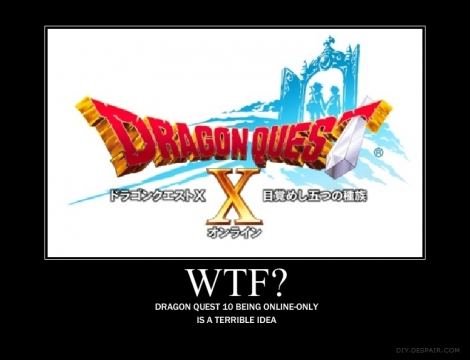Posted Monday, 4th July 2011 under Soapbox rants
Comments Off on Am I a gaming aesthete?
Jeremy Parish recently wrote about the gaming aesthete, and the post captured something I’ve been trying to articulate for a while now. For whatever reason, I seem to prefer games with a particular aesthetic quality and loathe titles that go against my irrational sense of preference. Amusingly, a portion of my taste can be summed up in UK:R’s watershed Blue Skies in Gaming campaign – out with the poo-brown, grey, boring colour schemes, and in with colour, life and vibrancy.

No more silly gangs, testosterone, “extreme”/”hardcore” drab colour schemes and other such douchebaggery. The content doesn’t have to be sunshine, lollypops and pixies, but it should be allowed to have colourful vistas and degrees of depth to its aesthetic execution.
The problem is that with the rise and rise of US development in the gaming sector (underpinned by the dramatic fall from grace we’ve seen from Japan in the last 10 years, and the EU in the 5-7 years prior to that), it’s all very vogue and chic to be an (extreme) macho douchebag mirroring something out of a Michael Bay movie (with optional 1-dimensional arse-kicking but well-endowed female sidekick), or drawl like an (extreme) urban gangster or be an (extreme) racing game with unnecessary (but extreme) back story. You then play this on your (e)x(treme)box or your slick black PS3 (with optional extreme metallic blue/red/moose controller to complement the silly Spider-man font), with trophies/achievements to add to your signature on your underground/alternative message board where you compare how awesome you are.
And with a couple of exceptions, it just doesn’t appeal to me. I prefer the classical Japanese or European approach to gaming, which allows colour and not so much testosterone to overrun the landscape. The problem is that both of these communities are not the stalwarts they once were. In the 8-bit micro and 16-bit computer days, I played more games from the EU than I can count – some were stupid bouts of pixellated testosterone, but the underlying mechanics and aesthetics were fresh and interesting. But with the move to larger teams and bigger budgets, the old models failed to adapt to the changing scenery and unfortunately a lot of talent was lost or quelled as part of larger corporate mergers.
Jump across the pond to Japan, and the quality of their arcade and console games in the 80s and 90s were unmatched and arguably the hive of some of the industry’s core creative content. Sega, Nintendo, Namco, Hudson, SNK, Capcom, Konami, Taito, Square, Enix… amazing studios that produced stunning games. But something happened between the DC/PS2/GCN/Xbox and the current generation, and the Japanese sector imploded – larger teams were required to fuel larger budgets and suddenly the shrinking local console market demanded more conservatism in game design. This meant the baby was thrown out with the bath water to accommodate the Western market (which meant the unique “Japaneseness” that made the games so appealing in the first place was often lost), or developers focused on placating niche local audiences with an abundance of moe and fan service (which are fine in moderation, but stifling when they’re pandering). To offset development costs and the changing Japanese market, the situation was further compound with the dramatic shift of development resources to handheld platforms (which I guess is fine if you prefer mobile gaming, but I prefer to play on a console). Thus you have a variety of factors that have essentially quashed Japan’s ability to compete with the West, in particular the US and Canada.
So that leaves me in an unusual position borne entirely from my own particular tastes in gaming, where I have to look a bit further than Japan for my gaming kicks. For the first time in a while I’ve been playing Western-developed games – The Darkness (developed by Starbreeze in Sweden), Mirror’s Edge (DICE, also in Sweden), Enslaved (Ninja Theory, UK) and Batman: Arkham Asylum (Rocksteady, UK)… but what’s interesting is that these have all been developed in the EU (sorry to the UK studios for lumping you in there!), which is a trend I hadn’t consciously realised until thinking about my gaming habits for this generation of consoles. This doesn’t mean I’ve neglected Japan, as I’ve also enjoyed Ninja Gaiden Sigma (Tecmo), Valkyria Chronicles (Sega WOW), Street Fighter 4 (Capcom), Yakuza 3 (Amusement Vision/Sega) and New Super Mario Bros. Wii (Nintendo EAD). What’s interesting looking at this shortlist is that some games contain some of the elements I normally don’t like about current-gen games, but they’ve done so in a way that emphasises the often intangible aesthetics that appeal to me.
In short, my gaming preferences are confused and contradictory at times, but share a commonality that points to the resultant aesthetic which entices me to play the game in question.
It also means I’m more likely to play Wonderboy in Monster World on the Sega Mega Drive than Resistance 3 or GTA4.
I think that last point sums up the entirety of this post quite succinctly. Figures 😛





